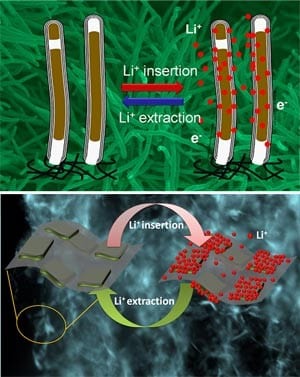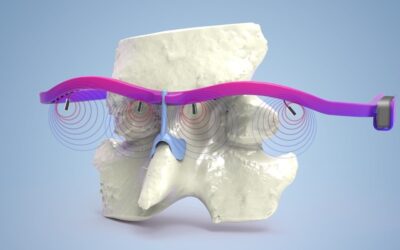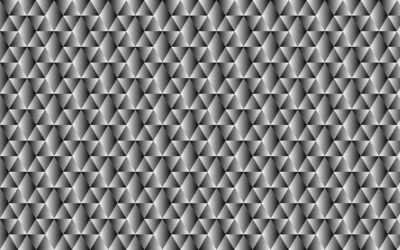
Microscope images and schematics of (top) one-dimensional C/Sn nanocables and (bottom) two-dimensional G/Sn/G sandwiches.
There is an ever increasing demand for advanced lithium-ion batteries with high energy density, high power density, and long cycle life. High-performance electrode materials need to be developed to meet these requirements. While the nanostructuring of materials has shown potential in improving their lithium storage performance, it remains very challenging to enable each involved nanostructured units to function efficiently during charge and discharge cycles.
Recently, Prof. Linjie ZHI’s group, from the National Center for Nanoscience and Technology, China, made progress on the development of high-performance electrode materials for lithium-ion batteries. They highlight the interfacing of electrochemically active materials and carbon as a second phase at the nanoscale level, designed and synthesized one-dimensional tin (Sn)/carbon (C) core-sheath structured nanocables as well as two-dimensional C/Sn/C sandwich-like hybrids. In their respective dimensions, the ideal contact between electrochemically active tin and electrically conductive carbon is realized. Such dimensionally engineered Sn/C interfacing offers several obvious advantages. First, the thus-introduced carbon phase effectively buffers the volume change of tin. Second, the carbon phase substantially prevents the aggregation of nanostructured tin during prolonged cycling. Third, the carbon phase is highly conductive and provides efficient electron transport pathways, thus enabling the full exertion of tin during cycling. As a result of structural engineering, these carbon/tin composite materials exhibit greatly improved electrochemical performances.
Very recently, they have extended the design concept to other fascinating electrode materials such as silicon. Considering the tremendous volume change of Si during cycling, they designed and synthesized a novel hybrid electrode structure composed of silicon nanowires dwelling in graphitic tubes. The resultant wire-in-tube structured electrode materials show remarkably improved lithium storage performance.
The structural design and interfacial engineering demonstrated represent a new and efficient avenue for advancing the development of high-capacity anode materials, and can be generalized to other fascinating electrode materials, highly desirable for next-generation lithium-ion batteries for applications in future transportation, grid, and among others.














